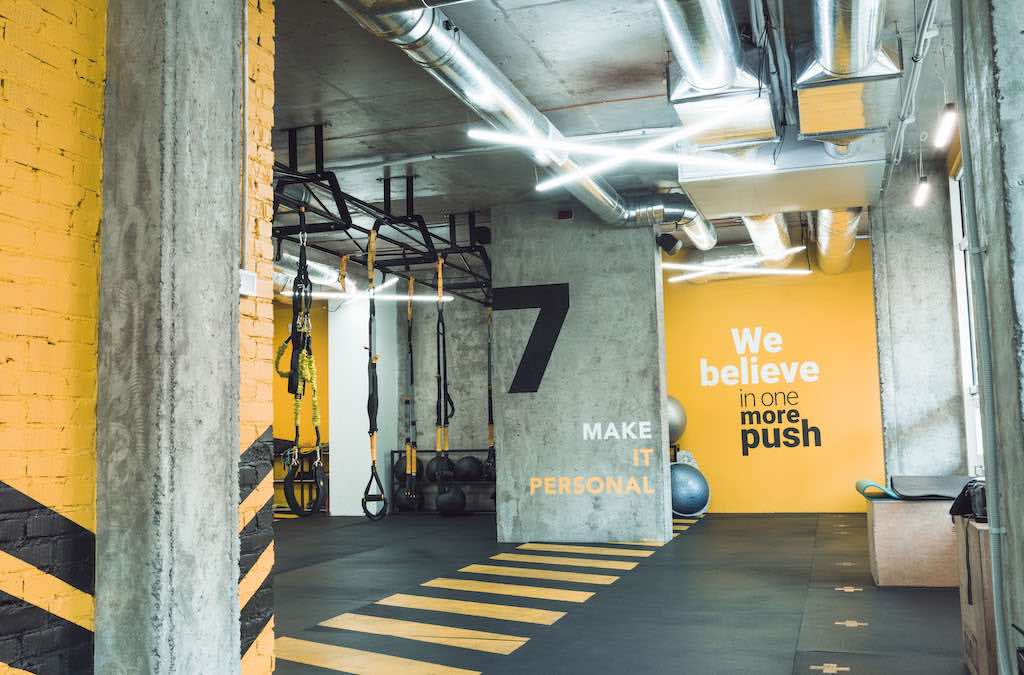The pursuit of fitness, health, beauty, and wellness has occupied the minds of humans for millennia, less so the spaces they’re pursued in though. The first commercial gyms emerged in the 19th century. The ‘Institute of Physical Culture‘, established in the mid-1800s, was modelled on the plush gentlemen’s clubs of the day. Wood panelling and potted plants featured, and Persian rugs marked the workout areas. Since that time, what we can expect from a gym has shifted drastically.
Gym fitouts in the late 20th Century were often utilitarian and cost effective. The focus was more on who can provide the good equipment, enough trainers, and a class schedule, rather than worry about the design of the space itself. The result? Often a homogeneous white box, maybe with fluorescent, glaring lights, probably carpeted to slightly minimise the echo of weights hitting the ground, and no guarantee of windows.
This is no longer the norm. We have graduated from the product-economy, from buying gym equipment for the home only to never use it. We upgraded to memberships at stark, monotonous, fluorescent-lit gyms. And from there, we have finally arrived in the holistically-designed wellness studio paradises of the experience-economy, with studios designed to be a pleasure to spend time in.
Think immersive group-training spaces, luxurious locker rooms, engaging environmental graphics, and integrated technology use. These are all areas into which game-changer businesses in the health and fitness industry are foraying into to set themselves apart from the pack. Wellness spaces are following cues that retail spaces established long ago; if you can engage the customer, build stronger emotional connections with them, get them to feel good about spending longer and longer on-site, they’ll be more loyal to your brand.
Here’s a look at some of the emerging trends in innovative Health and wellness space design:
Biophyllic Gym Design
Biophyllic gym design is one approach to creating engaging, branded spaces that encourage stronger connections with clients. Biofit are a company who use the principles of biophilia in this way, with grass-like carpets, plenty of natural light, and plants to give the feeling of being outdoors. It’s about as far from the grim-gym vibe as you can get, and it’s a compelling alternative for those who find traditional gym spaces off-putting.

Nightclub/Gym Hybrid
While greenery has been said to have a calming effect, there are those who prefer a high-octane environment for getting fit. For this purpose, a night-club/gym hybrid has come to the fore. F*it in Ascot Vale is an exponent of this style, with dark, sleek spaces, a ‘bar’, neon lights and pounding music creating more the mood of a night-out than a weight session. Another, Balboa Bar and Gym in Zurich, functions as an actual nightspot as well as a fitness studio.

Minimalist Gym
For those who are less interested in clubbing or greenery, but are still aesthetically motivated, a slew of minimalist wellness studios and gyms have been established. In Amsterdam, Rocycle practically vibrates with clean lines, translucent surfaces, plenty of natural light, and polished concrete. Closer to home, Collingwood’s Good Vibes yoga studio somehow manages to combine brutalist-futurism with a zen atmosphere to create a unique and memorable space for meditation and yoga practice.

Each of these (and there are many more examples out there) show the potential that an innovative and holistic approach to branded spaces can offer in the realm of health and wellness. A physical environment that is engaging and appealing can have a major impact on our feelings of connection to a brand – the retail industry have known this for decades, why should wellness be any different?

